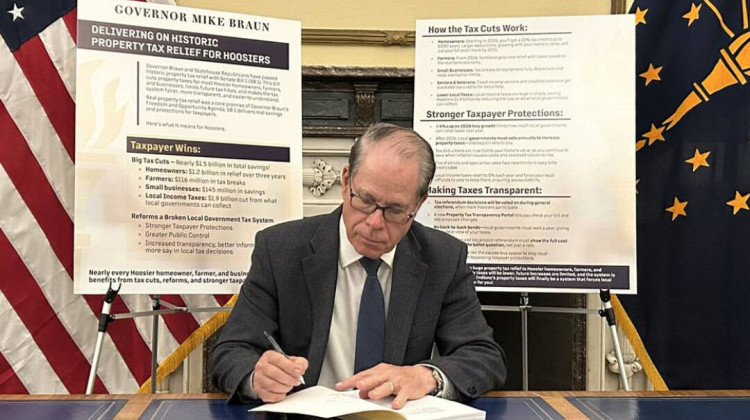
The bill allows for a lot of local control, but local laws that require pollinator habitat at solar farms could be vetoed by landowners.
Courtesy of Fresh EnergyLawmakers are making another attempt to set standards for new wind and solar projects in Indiana. But this time, the state isn’t making anything mandatory for local governments.
The bill, SB 411, would allow Indiana counties to be designated as solar or wind ready communities. Counties would adopt the state’s standards — like how far away a wind farm should be from a home. The state would then give those counties a dollar for every megawatt hour of energy generated by the project, every year for a decade.
A bill proposed last year would have made those state standards mandatory for all counties — to provide consistency for renewable energy companies looking to build in Indiana. The bill caused a lot of controversy for overriding local ordinances and ended up being withdrawn by its sponsor, Sen. Mark Messmer (R-Jasper).
“I don’t know if anybody’s going to want to fight that hill again. I know I don’t," he said.
READ MORE: Bill would create guidelines for wind and solar farms, override stricter local laws
Join the conversation and sign up for the Indiana Two-Way. Text "Indiana" to 73224. Your comments and questions in response to our weekly text help us find the answers you need on statewide issues.
Many groups have come out in support of the bill — including the Association of Indiana Counties, the Indiana Farm Bureau, and the Indiana Energy Association.
The Hoosier Environmental Council has problems with just one line. It would allow landowners to veto requirements to cover the ground at a solar farm with pollinator habitat — something some counties have written into their local laws. Tim Maloney is the HEC’s senior policy director.
“It could mean building a solar farm for 20 or more years that is not in the best interest of the county from the vantage point of stormwater control, soil and water conservation, wildlife protection or the aesthetics of the county," he said.
The bill passed in the Senate and now moves to the House for consideration.
CLARIFICATION: A previous version of this story said counties would receive $1 for every megawatt of power generated for a decade. For the purpose of clarity, it has been changed to every megawatt hour.
Contact reporter Rebecca at rthiele@iu.edu or follow her on Twitter at @beckythiele.
Indiana Environmental reporting is supported by the Environmental Resilience Institute, an Indiana University Grand Challenge project developing Indiana-specific projections and informed responses to problems of environmental change.
 DONATE
DONATE






 Support WFYI. We can't do it without you.
Support WFYI. We can't do it without you.